
CHAPTER V
Fortifications and Defenses
Section I. DOCTRINE OF FORTIFICATIONS
1. Economy of Force
The Germans regard economy of force as a fundamental principle in designing fortifications.
In conformity with this view, they employ defense works to permit a relatively
smaller force to defend a line than otherwise would be required.
German troops are taught that fortifications exist not for their personal safety
but to enable them to fight more effectively, although fortified works,
especially those of reinforced concrete, naturally make for a lower casualty rate.
The German doctrine of offensive warfare therefore is not affected by the construction
of strong systems of defense. Such systems in fact may be considered to be
offensive rather than defensive in purpose, since they make it possible to
concentrate a relatively large proportion of the field forces for action at
any given point. In September 1939, the Westwall (Siegfried
Line)1
enabled the Germans to hold their Western Front with approximately 20 divisions,
while employing 40 to 50 divisions against Poland. These latter troops, in turn,
could be concentrated on the northern and southern parts of the Polish border
for a double envelopment of the Polish forces, since the vulnerable central sector
due east of Berlin was protected by the so-called Oder Quadrilateral,
a zone of permanent defense works constructed between 1935 and 1939. Again,
in May 1940, the Westwall played an important role--this time in the envelopment
of the Maginot Line--for, while the French border was held with relatively weak forces,
the bulk of the Wehrmacht wheeled through Belgium and Luxembourg.
2. Organization of Defenses
a. PRINCIPLE OF DEPTH. The Germans believe that a fortified line should consist of
small works organized in great depth. This principle, embodied in the Westwall,
is directly opposed to that of the French Maginot Line, which was a continuous wall
of mammoth forts with little, if any, depth. The German idea is that a fortified line
should not be employed to present an unyielding front to an attacker, but rather
to act as a shock absorber and gradually slow down the advance. Then, when the attack
has lost its momentum, counterattacks can be launched to destroy the penetration
before the attacker has reorganized and consolidated his gains. The importance
the Germans attach to counterattack is shown by the fact that they keep their
best assault troops for this purpose and man the concrete positions with inferior soldiers.
In order to impede the enemy's advance as much as possible and to facilitate
the counterattack, troops manning the fortifications are taught to continue fighting
even though their positions are overrun.
b. ZONES OF DEFENSE. The Germans achieve depth in a fortified line by constructing
successive zones of defense. In a typical segment of the Westwall, there are three
independent zones from front to rear.
(1) The Forward Zone (Vorfeldzone) contains field fortifications
including trenches, barbed-wire entanglements, machine-gun emplacements, and observation posts.
(2) The Main Defense Zone (Grosskampfzone) comprises fortified structures
such as pillboxes, casemates and shelters, and antitank obstacles covered by antitank guns.
In addition, this zone has intermediate areas, front and rear, in which isolated works
are placed at critical points along natural avenues of enemy approach.
(3) The Rear Defense Zone (Rückwärtige Zone) is much the same as (2),
but is not as strong.
c. STRENGTH. It is the German practice to provide the weakest terrain with the strongest and
[V-1]
most numerous defense works arranged in the greatest depth. But the defended zone
is everywhere made as strong as the available resources permit, and no terrain
is left entirely without the protecting fire of some permanent defense works.
d. SITING OF DEFENSE WORKS. Pillboxes and casemates in a fortified line are so spaced
as to provide interlocking fields of fire between adjacent works, yet they are not
so close together that hostile artillery fire which misses one structure will hit another.
In view of the German theory as to the purpose of fortifications, the principle of
"effect before cover" is applicable; that is, a wide field of fire is considered
more important in siting a position than cover or concealment. When possible,
pillboxes and casemates may be sited to permit both frontal and flanking fire.
This is particularly important since German doctrine directs that fortified positions
be held even after the defensive line is overrun by the enemy. The fire plan of
field artillery may be coordinated with the belts of fire from the fortifications
so that concentrations can be laid on the areas where fire coverage from the
fortifications is relatively weak.
e. FIELD WORKS. In accordance with German doctrine, concrete and steel pillboxes,
and casemates are supplemented by extensive field fortifications to lend flexibility
and mobility to the defense, to engage the enemy before he gets close enough
to assault the main works, and to facilitate counterattack. Such field works are
interspersed liberally throughout the Westwall and include minefields, obstacles,
fire trenches for infantry weapons, and open emplacements for field artillery.
Although open gun emplacements are intended to give supporting fire to pillboxes
and casemates, they also can cover dead areas between the main works.
f. SHELTER. The German practice is to provide all troops with adequate shelter
against weather and hostile fire. Concrete pillboxes and casemates often have
accommodations for the gun crews, and open field works have underground shelters
or dugouts adjacent to the firing positions. In a fortified line, underground shelters
are provided in the rear of the battle zone for the reserves who are assigned
to the counterattack. This is in accordance with the German doctrine that reserves
should be committed as a unit, fresh, and without having had to sustain casualties
or endure the strain of hostile aerial and artillery bombardment while waiting to attack.
Personnel shelters enablethe reserves to be kept close to the front so they can
begin the counterattack with minimum delay.
g. COMMUNICATIONS. German fortified works commonly are linked together with
communication trenches to facilitate relief of personnel, ammunition supply,
and the care and evacuation of the wounded. In some cases a group of defense works
is connected by a system of tunnels. Signal communication is provided by
telephone cables buried in the earth, and often telephones communicate between
the outside and the inside of a structure. Speaking tubes are installed in many
of the works in case of failure of the telephone system.
Section II. CHARACTERISTICS OF FORTIFICATIONS
1. Principles of Design
The basic considerations in the design of German fortifications are fire effect,
cover, and concealment. Fire effect has first priority; natural concealment is used
as much as possible by blending positions with the surrounding terrain.
Personnel and supply shelters, in the construction of which fire effect need not
be taken into consideration, are completely below ground level, or as low as the
water-table level permits. In order to present as small a target as possible to
high-angle fire and bombing, emplacements, pillboxes, and casemates are built no larger
than necessary to permit crews to operate their guns.
2. Construction
a. GENERAL. All permanent, fortress-type works and many field works are of
concrete reinforced with steel. Some field works, however, are of masonry, brick,
or timber. Steel also is used in concrete structures for beams, turrets, cupolas,
gun shields, machine-gun loopholes, and doors. These installations are prefabricated
and are assigned code or model numbers. The concrete works themselves are designated
by type number and are constructed from plans prepared in the Army Ordnance Office.
b. THICKNESS OF CONCRETE. The usual thickness of concrete walls and roofs is 6 feet 6 inches
(2 meters); smaller thicknesses are found as a rule only in the small field works.
In casemates the minimum thickness of the walls and roof is 6 feet 6 inches,
and generally increases commensurately with the caliber of the gun.
[V-2]
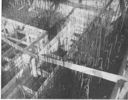
Figure 1--German three-way reinforcing rods and wooden forms ready for pouring in concrete.
c. REINFORCEMENT OF CONCRETE. Most German concrete fortifications are reinforced
with steel bars running in three dimensions to form cubes of 10- or 12-inch sides.
The diameter of the bars, which are hooked at both ends, varies from 3/8 inch to 5/8 inch,
the most common size being 1/2 inch.
The roof over the interior compartments in most structures is supported by steel I-beams, encased in the concrete roof. The size of the beams depends on length of the span. Steel plates laid between the I-beams, and resting on the lower flanges, form the ceiling of the structure. These plates prevent the inside of the roof from spalling if the structure sustains a direct hit from artillery shells or aerial bombs. In some cases, the roof is supported by reinforced-concrete beams instead of the steel I-beams, apparently to save critical material.
3. Open Emplacements
a. "TOBRUK" TYPE. From experience in the North African campaign the Germans
derived a type of open, circular pit lined with concrete, which they called a "Tobruk".
Hitler subsequently ordered Tobruk pits to be used as defense works in the field,
and instructions for building them were distributed down to divisions.
A Tobruk pit, which consists of a concrete weapon chamber with a neck-like
opening at the top, is built entirely underground. The concrete usually is reinforced.
Tobruks vary in size, depending on the weapon mounted in them, but the diameter
of the neck is kept as small as possible to reduce the risk of direct hits.
Instructions to German troops insist that a Tobruk should not have a concrete roof,
since this would reveal the position to the enemy. A board of irregular shape,
used as a lid, camouflages the circular opening and keeps out rain.
[V-3]
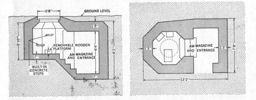
Figure 2.--Ringstand.
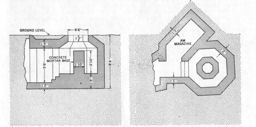
Figure 3.--Tobruk for 50-mm mortar.

Figure 4.--Panzerstellung.
[V-4]
b. TOBRUK 58c. The most common type of Tobruk is designated 58c
by the Germans (see Figure 2). It also is called a Ringstand from a rail that
runs around the inside of the neck. The rail provides a track for rotating a
machine-gun mount, thus giving the gun a 360-degree traverse. This type of Tobruk
has an ammunition chamber, which also serves as an underground entrance.
c. MORTAR EMPLACEMENT. A Tobruk used as a mortar emplacement, such as Type 61a
(see Figure 3), is larger than a Ringstand and has a concrete base in the center of
the pit for mounting the mortar. This type also is combined with an ammunition magazine.
d. Panzerstellung. The German also have used a Tobruk as a base for a tank turret,
usually taken from a French Renault 35 (see Figure 4). Such an installation,
called a Panzerstellung, has a turret armed with an antitank gun and a
machine gun coaxially mounted. The turret is bolted to a circular metal plate,
which is rotated by hand on wheels around a track in the top of the pit affording
a 360-degree arc of fire.
4. Pillboxes and Casemates
a. CONSTRUCTION.
(1) General. Although the Germans have a number of types of pillboxes and casemates,
most infantry and artillery weapons are installed in open rather than closed emplacements.
In accordance with German doctrine, pillboxes and casemates are supported by open field works.
Pillboxes may have wall and roof thicknesses of as little as 2 feet; indeed,
some of the earliest examples built on the Westwall had thicknesses of only 1 foot.
This was increased, however, until all pillboxes had at least the standard thickness
of 6 feet 6 inches. Casemates, which house guns of large caliber, have at least
the standard thickness of 6 feet 6 inches. Pillboxes and casemates usually have a
stepped embrasure to prevent bullets from ricocheting into the gun opening.
In addition, a steel gun shield may close the opening.
(2) Type 630 pillbox.. Figure 5 illustrates a newer type of pillbox for the
light antitank gun, Type 630, which has 6 feet 6 inches of concrete in the roof,
front wall, and side walls; and 6 feet 4 inches in the rear wall.
A machine gun firing through a loophole in the rear provides close defense,
and a loophole in the interior wall at thefoot of the stairs has an opening
for a machine gun to keep attackers from entering the pillbox. A Tobruk pit
is built into the front wall as an observation or machine-gun post.
(3) Local designs.. Some pillboxes are found which do not conform to
standard types and are apparently of local design. The Germans often construct
a pillbox by mounting a steel turret on an open emplacement, and many pillboxes
along the French coast were built by mounting a tank turret over a pit in the sea wall.
(4) Type 685 casemate.. Figure 6 illustrates a typical German casemate,
Type 685, for the 210-mm or 128-mm antiaircraft guns. Most casemates are of this
simple design, consisting of a gun room with recesses for ammunition,
but some may provide quarters for the gun crew. The walls and roof of Type 685
are 11 feet 5 inches (3.5 meters) thick. The embrasure permits a traverse of
60 degrees and an elevation of 45 degrees. A number of similar casemates
(Types 683, 684, 686, 688, 689, 690, 692, and 694) have embrasures for a traverse
of 90 degrees or 120 degrees. Additional protection and camouflage are afforded by
banking the sides and by covering the top with a 2-foot 6-inch layer of earth.
(5) Type 677 casemate.. The Germans often site a casemate to deliver flanking fire.
For this purpose, a wing wall is provided on the side toward the enemy to shield
the embrasure from hostile fire, as in Type 677 for 8-cm gun (Figure 7).
The length of this wing wall depends on local ground conditions.
The casemate can be built to fire to the right flank by constructing the wing
on the opposite wall.
b. CAMOUFLAGE. To camouflage pillboxes and casemates, earth is banked over the sides and top,
the entrance in the rear is covered by a flat-top, and a camouflage net may be hung
in front of the embrasure while the gun is not in action. In the case of small pillboxes,
branches may be placed over the embrasure. The Germans also conceal pillboxes
and casemates by enclosing them in wooden structures resembling ordinary houses.
The guns then are fired through false doors or windows, or a section of the wall
over the embrasure is made to drop out of the way. Pillboxes also are built into
the cellars of existing buildings. German instructions to troops insist that no cover
or concealment should obstruct the field of fire of the gun.
[V-5]
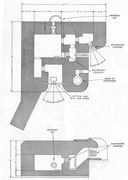
Figure 5.--Typical pillbox, Type 630 for light antitank gun.
[V-6]
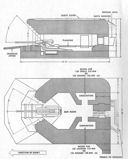
Figure 6.--Typical casemate, Type 685.
[V-7]
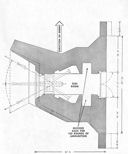
Figure 7.--Typical casemate, Type 677.
[V-8]
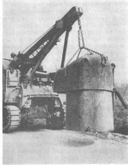
Figure 8.--Emplacing a mobile steel pillbox.
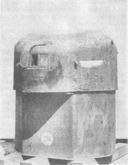
Figure 9.--German mobile steel pillbox.
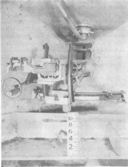
Figure 10.--Interior of mobile steel pillbox showing machine-gun mount.

Figure 11.--View through doorway of mobile steel pillbox.
[V-9]
c. MOBILE STEEL PILLBOX. The Germans also have a mobile steel pillbox (Figures 8, 9, 10, 11)
which is armed with a machine gun and manned by two men. The pillbox is constructed
in two sections, a top half and a bottom half welded together. The top half
contains the aperture, armament, air vents, and entrance door. Thickness of the armor
varies from 5 inches at the aperture to 2 inches at the sides and top.
The bottom half is only inch thick, but is entirely below ground level
when the pillbox is in place.
The total weight of the pillbox without armament or ammunition is 6,955 pounds.
The aperture, which is seen on the left side in the photograph, is divided into two parts:
the lower part for the gun barrel; the upper for sighting. The machine gun
has an arc of fire of approximately 45 degrees. The aperture cover is operated
manually from the interior of the pillbox. Entry is through a door, 20 inches by 23 inches,
in the back of the upper half. The door can be seen hanging open on the right
in the photograph. There are two openings in the top for periscopes, one over each seat.
A blower operated by a pedal provides ventilation. The ventilation holes on both sides
of the pillbox also enable an axle to be passed through the pillbox.
Wheels are fitted to the ends of this axle and the pillbox can then be towed upside down.
When installed for use, the sides and top are banked to blend with the surroundings.
5. Shelters
a. PERSONNEL SHELTERS.
(1) Purposes. The Germans stress the desirability of adequate shelter for all troops.
Personnel shelters are built in the rear of a fortified line to house the reserves
and also in individual defense positions for the troops who man the installation.
Some personnel shelters have accommodation for two sections, or 20 men,
but it is the usual German practice to house no more than ten men in one shelter.
A personnel shelter also may serve as a headquarters, a command post, a medical station,
or a signal center. Types provided for these purposes are similar in design and
differ mainly in size and number of interior compartments.
(2) Type 621 shelter. One of the most common personnel shelters (Type 621,
for one infantry section) is illustrated in Figure 12. It is constructed of reinforced concrete,
with the standard wall and roof thickness of 6 feet 6 inches (2 meters).
It is entirely underground, with anearth covering of 1 foot over the roof.
Seventeen steel I-beams, 13 feet 2 inches long, support the ceiling over the
interior compartment. Steel plates resting on the bottom flanges of the I-beams
provide an all-steel ceiling. Shorter I-beams support the ceiling over the doors
and entrance stairs. A camouflage flat-top is stretched over the trench in the rear,
which gives access to the entrance stairs, to conceal it from air observation.
To secure one side of the flat-top, a row of hooks is cast into the roof along
the rear side of the shelter. A Tobruk pit is built into one of the wings in the
rear for observation. Although the shelter accommodates only ten men, two entrances
are provided to enable the section to deploy rapidly when they are to man their
positions nearby or launch a counterattack. Each of the entrance stairs is covered
by a machine gun firing through a loophole in the interior wall at the foot of the stairs.
Both entrances converge into a gas lock, sealed by three steel doors each about
1 inch thick. All doors open out. To make the chimney grenade-proof, the vertical
shaft is continued below the stovepipe and curved outward into the space used for
the emergency exit. A grenade dropped into the chimney thus will not enter the shelter
but will fall outside the sidewall and explode harmlessly. There are four ventilation shafts
opening into the rear wall between the entrance stairs. Two of these are dummies
to mislead attackers who try to introduce smoke into the ventilating system to
drive out the occupants. The blower is driven by an electric motor, but the Germans
usually make provision for manual operation as well, in case of power failure.
To communicate with the interior of the shelter, there is a telephone at the head of
one of the entrance stairs, and both a telephone and a speaking tube in the Tobruk.
A telephone cable, buried deep in the earth, leads to neighboring installations.
(3) Modifications in design. Modifications may be made in the plans in order to
adapt the shelter to the terrain; for example, the Tobruk may be built into the
other rear wing, or the emergency exit may be installed in the opposite side wall.
Such changes are at the discretion of the local construction authorities.
Some types of personnel shelters have a steel turret built into the roof for observation,
and sometimes a machine gun is mounted in the Tobruk. However, the Germans insist
that troops are not to fight from shelters, but are to use them merely as protection
while not engaged in combat.
[V-10]
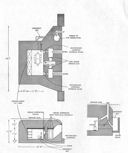
Figure 12.--Typical personnel shelter, Type 621.
[V-11]
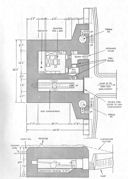
Figure 13.--Typical antitank-gun shelter, Type 629.
[V-12]

Figure 14.--Typical emplacement and shelter, Type L 409.
[V-13]
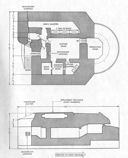
Figure 15.--Typical observation post, Type 636.
[V-14]
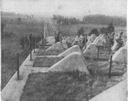
Figure 16.--Dragon's teeth showing concrete foundations.
b. ANTITANK-GUN SHELTERS. The Germans provide a special shelter for antitank guns
and their crews. Figure 13 shows a typical antitank gun shelter, designated by the
Germans as Type 629. Accommodation for the men is similar to that of other
personnel shelters, but there is a separate compartment for the gun and ammunition.
Double doors in this compartment enable the gun to be rolled out of the shelter
and up a ramp (slope 1:6) to an open emplacement in the rear of the shelter
from which it fires over the top of the shelter. The shelter has two Tobruk pits
(Ringstände) in which machine guns appear to be installed to
support the antitank gun. These Tobruks are connected by telephone and speaking tube
to the crew's quarters. The shelter also is equipped with a periscope.
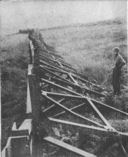
Figure 17.--German Elements "C" joined to form antitank obstacles.
[V-15]
c. COMBINED SHELTER AND EMPLACEMENT. Figure 14 shows a personnel shelter,
with an open emplacement on the roof, known as Type L 409 ("L" stands for Luftwaffe).
This type will accommodate nine men, and its details are similar to those of other
personnel shelters. Type L 409 is for a light antiaircraft gun, but in others of
the L 400 series the roof emplacement is used to mount a searchlight (L 411),
or a radio direction finder (L 405). In some types, the shelter below the gun emplacement
is used as a battalion command post (L 434) or an ammunition magazine (L 407).
d. SUPPLY SHELTERS. The Germans have designed a number of shelters for the storage of supplies,
ammunition, and drinking water. Suchtypes usually are entirely underground
and may have a wall and roof thicknesses less than the standard 6 feet 6 inches.
Shelters designed for supplies may have only one entrance; they ordinarily
have no emergency exit, machine-gun loopholes, or Tobruk.
6. Observation Posts
The Germans have constructed special works of reinforced concrete as coast artillery
observation and command posts. A typical observation post, Type 636 (for Army Coast Artillery),
is shown in Figure 15. Separate rooms are provided for observation, plotting,
radar, officers' quarters, and enlisted men's quarters. A Giant Würzburg radio
direction finder is mounted in
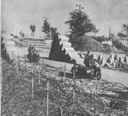
Figure 18.--Slots in the concrete pillars hold steel bars across the road to serve as a block.
[V-16]
the emplacement on the roof. For close defense, there are two machine-gun loopholes
covering the rear entrance: one in the exterior wall, and one in the interior wall
at the foot of the stairs. There are quarters for two officers and nine enlisted men,
but since this does not accommodate all the personnel on duty at the observation post,
a personnel shelter for one section is built nearby.
Field artillery observation posts in a permanent defense line are similar to personnel shelters,
with the addition of a steel cupola for the observer.
7. Obstacles
The German tactical use of obstacles differs from the U.S. Army in that they install
them within the main battle positions. Obstacles are covered by fire from concrete
pillboxes and open emplacements. The Germans employ both fixed and movable permanent
obstacles, constructed for the most part of steel, concrete, or both.
The most common types are described below.
a. ANTITANK OBSTACLES.
(1) Dragon's teeth. A prominent feature of the West wall is the antitank obstacle
called by the Germans "dragon's teeth". These are truncated pyramids of reinforced concrete,
arranged in irregular rows of four or five. The height of the teeth varies successively
from 21/2 feet in the first row on the enemy side to
5 feet in the rear row, so that a tank is made to belly on the obstacle.
The teeth are cast in a concrete foundation running from front to rear, and sometimes
also along each row, to prevent the teeth from being toppled over.
Dragon's teeth are usually sited in long continuous lines, broken only where roads
pass through the line of obstacles and where the terrain is considered unsuitable
for tank activity.
(2) Elements C.The Germans adopted
the Belgian de Cointet antitank obstacle, more often called "Elements C", which
is illustrated in Figure 17. Here a number of units have been fastened together
to form a continuous antitank wall, but since the units have rollers in the front

Figure 19.--Concrete tetrahedra used as antitank obstacles.
[V-17]

Figure 20.--Road passing through Westwall dragon's teeth. Note (right) uprights for horizontal steel bars whichcan be placed across the road as a block.

Figure 21--Line of dragon's teeth of Westwall. Note steel antitank barrier set at an angle in the road.
[V-18]
and rear, the Germans also use them singly as movable blocks.
(3) Curved-rail obstacle. Similar to the "Elements C" is the curve-rail
antitank obstacle, which the Germans used extensively along the Westwall.
The curved rail, which slopes upward to a steep angle at the rear, faces the enemy,
so that tanks attempting to climb over the obstacle tip over backward.
It usually is made in sections 6 feet high, 3 feet wide, and 10 feet long.
b. ROAD BLOCKS.
(1) Steel bars. A road passing through a barrier may be closed by
horizontal steel bars arranged successively higher in reinforced concrete slots
or by steel rails set upright into the road.
(2) Tetrahedra. The Germans also
block roads with tetrahedra, which consist of steel frames or solid concrete
blocks with four faces. The height of a tetrahedron varies from
21/2 to 41/2 feet,
and its purpose is to belly a tank.
c. BARBED-WIRE OBSTACLES. (1) A German double-apron fence is illustrated in Figure 22.
The fence is 4 to 5 feet high. (2) Knife rests, or chevaux de frise, strung with
barbed wire, can be seen to the right of the fence where the road passes through
the obstacles. The Germans call knife rests "Spanish riders" and use them as road blocks.
German knife rests are about 4 feet high and have angle-iron or timber frames.
(3) Concertina wire (S-Rolle) often is used by the Germans either in single,
double, or triple coils. Sometimes it is wired to concrete posts, fixed on top of walls,
and interwoven with double-apron fences or between concrete dragon's teeth.
(4) The Germans also use an obstacle consisting of trip wires (Stolperdraht)
arranged about 30 feet in depth. The wire is stretched from 4 to 8 inches above
the ground on irregular rows of wooden pickets. The interval between pickets
in rows is 10 to 13 feet and between rows 7 to 10 feet.

Figure 22.--German double-apron barbed wire. Note knife rests in the background (right).
[V-19]
Table of Contents
Previous Chapter (4)
Next Chapter (6)
Footnotes:
1.
The Germans do not employ the term "Siegfried Line".






















